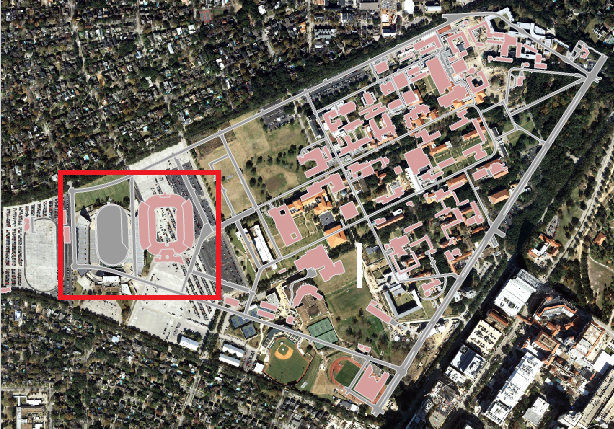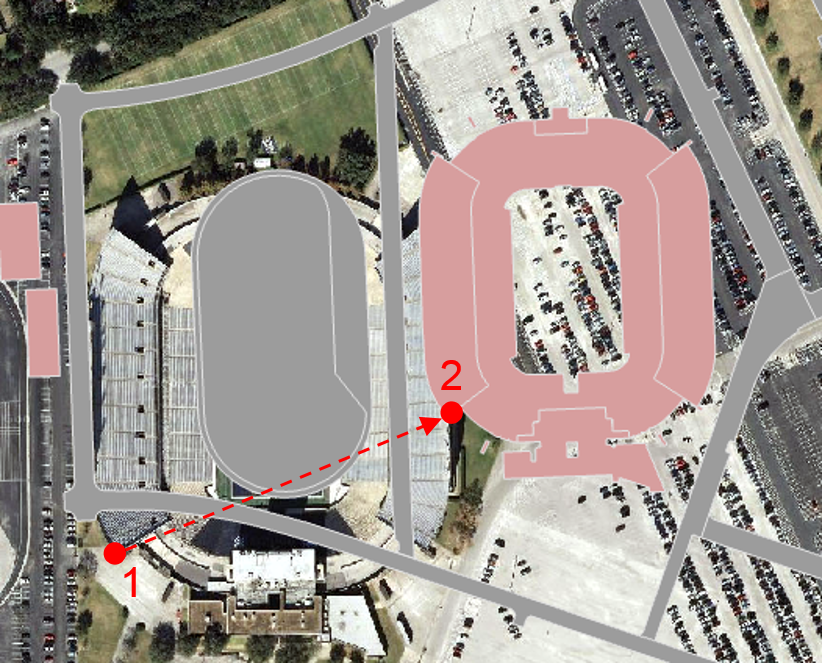...
- Click Imagery.zip above to download the tutorial data.
- Open the Downloads folder.
- Right-click Imagery.zip and select Extract All....
- In the 'Extract Compressed (Zipped) Folders' window, accept the default location into the Downloads folder and click Extract.
- Drag the unzipped Imagery folder onto your Desktop.
- Close all windows.
...
Preparing a Reference Map for Georeferencing
- On the Desktop, double-click the Imagery folder.
- Double-click the Imagery.aprx project file to open the project in ArcGIS Pro.
- Maximize the ArcGIS Pro application window.
Before you can georeference an image, you must have existing GIS data with known coordinates containing similar features to those in the image, which will serve as your reference data. While you can georeference directly to the basemaps built in basemapsto ArcGIS Pro, additional vector data can be helpful, because vector data can lay on top of the imagery image you are trying to georeference, so they that both the reference data and the image can be seen simultaneously, whereas relying . Relying on the basemap alone would require repeatedly toggling the image on and off or adding a transparency to the image, so that both the image and the basemap are visible, but this type of display can be more difficult to visually interpret. Since you will be georeferencing an aerial image of the Rice campus, have vector layers you will first prepare vector data related to campus features would be helpfulphysical features on the Rice campus to serve as your reference data.
- In the Catalog pane on the right, expand the Databases folder.
- Expand the Imagery.gdb geodatabase.
- Click the first buildings feature class to select it.
- Hold down Shift and click the last streets feature class to select all four feature classes within the geodatabase.
- Right-click the streets feature class and select Add To New Map.
Ensure that all four feature classes (streets, sidewalks, parking, buildings) appear in the Contents pane on the left. If you are missing any layers, drag them from the Catalog pane on the right directly into the Map view. The layers of the Rice campus should look familiar. If desired, update the symbology of each of the layers to a color of your choice by right-clicking on the color patch beneath each layer name in the Contents pane and selecting a color. For example, you might choose to make the parking and streets layers two shades of gray, the sidewalks layer tan, and the buildings layer red, as shown below.
Now you will add in a JPEG file image depicting an aerial view of campus your map. This image is just like any other image file you are familiar with and does not contain any sort of spatial reference.
- In the Catalog pane, expand the Folders folder.
- Expand the Imagery folder.
Right-click the aerial.jpg raster image and select Add to Current Map.
Info title Tip If the Add to Current Map command does not work, you can click the Add Data button within the Map tab on the ribbon and then browse to and select the same JPEG image file.
- In the Table of Contents, right-click the aerial.jpg layer and select Zoom to Layer.
- In the Table of Contents, right-click the streets layer and select Zoom to Layer.
...
Occasionally, you will come across an undefined GIS data layer for which you cannot locate complete metadata telling you the coordinate system and projection for the data. In other cases, you may wish to make use of raster or image data that never had a coordinate system in the first place, such as this aerial photograph or a scanned historical planning map. Whenever the spatial reference for a layer is unknown or non-existent, you must georeference the layer by lining it up visually with other layers that have a known projection.
...
The full extent of the image now appears behind the current layers. It is always good to zoom in to the approximate extent of the image before using the Fit to Display command. Notice that while both layers are now visible, they are not yet perfectly aligned. If significant rotation or scaling was necessary to identify common control points, you would use the Move, Scale, and Rotate buttons on the Georeference tab at this point. Once control points have been added, these tools are no longer available.
You now need to identify a common point in both the aerial image and the vector reference layers.
- In the Table of Contents, uncheck the parking and sidewalks layers to make the aerial image easier to view.
- Visually, identify the football stadium in both the aerial layer and the buildings layer.
Hold down Shift and your cursor should switch from a pointer finger to a magnifying glass with a plus sign.
Info title Tip If you don't see the proper cursor, then you may need to re- select the Explore button on the Map tab in the ribbon.
- On the western portion of campus, click and drag a box around the football stadium in both layers to zoom into in to the area in which you will add your first control point.
- In On the ribbon, on the Georeference tab, click the Add Control Points button. Your cursor will change to a crosshair.
Click on the southwest corner of the upper deck of the stadium in the aerial layer.
Info title Tip If your first click is on an unintended location, press Esc to remove the point. Then click the Add Control Points button again to resume adding a point.
With a line linking to the first point you clicked on, click on the southwest corner of the upper deck of the stadium on the buildings layer.
The two points will snap together, lining up the image at that particular control point.
Info title Tip It is fine to zoom in and out by scrolling the scroll wheel or to pan by clicking and holding your scroll wheel button while moving the mouse in between clicking on the two control points if they are not both visible on your screen.
If your second click is on an unintended location or you clicked on the two points in the opposite order, then, on the Georeference tab, in the Review group, click the Select Control Point button. Then click on the erroneous control point on your map. The control point symbol will change from a larger red circle with an X through it to a smaller red box when it is selected. Once the control point is selected, go back to the Review group on the Georeference tab and click the Delete Selected Control Point button. If you make a mistake on your first control point, so that removing the erroneous point results in removing all points, then the image will disappear from view and you will need to start again by zooming to the streets layer and the clicking the Fit to Display button. Click the Add Control Points button to resume adding a point.
The two points will snap together, lining up the image at that particular control point.
- In the Table of Contents, right-click the streets layer and select Zoom to Layer to return to the full extent of the image.
...


